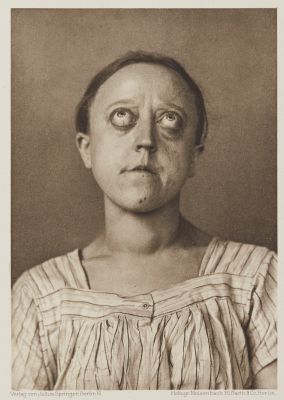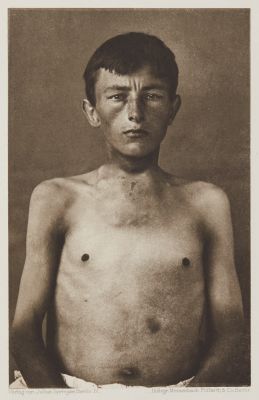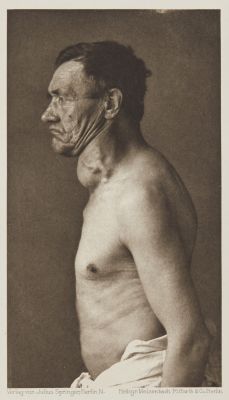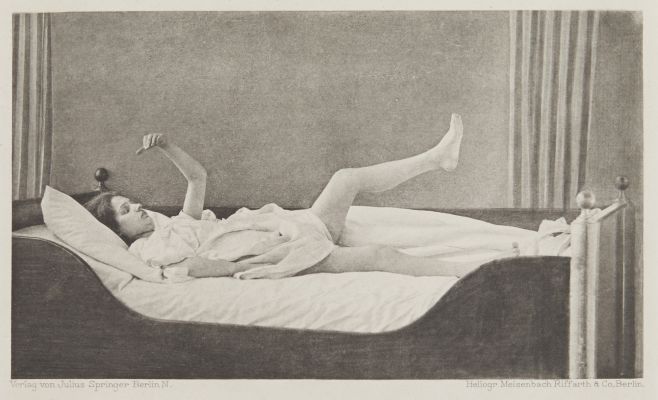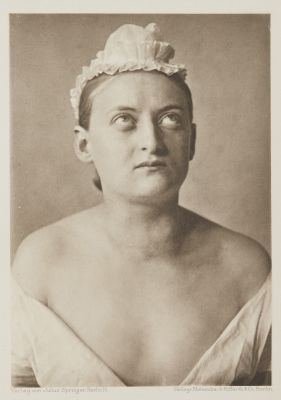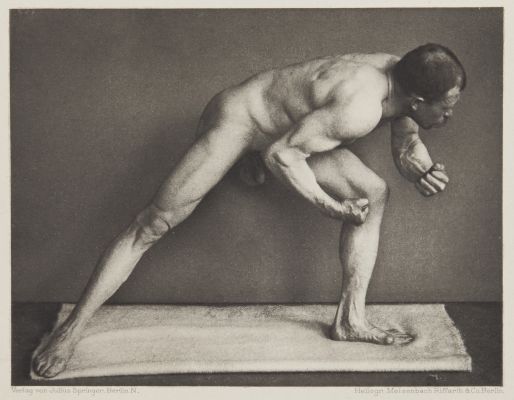
Title
Tafel 23Artist
Curschmann, Dr. H. (German, 1846-1910)Publication
Klinische Abbildungen; Sammlung Von Darstellungen Der Veränderung Der Aüsseren Körperform Bei Inneren KrankheitenDate
1894Process
PhotogravureAtelier
Meisenbach, Riffarth & Co.Image Size
14.5 x 9.5 cm
Klinische Abbildungen was originally intended as a teaching aid to show changes to the exterior of the human body caused by internal disease. It was printed as a portfolio of fifty-seven loose photogravure plates to provide a convenient way to display the plates during lectures and demonstrations. Brief text on each case supplements the pates. In his preface, Dr. Curschmann directs the reader to the photography, relegating the accompanying text to a confirmative and elucidating role. The detachment of the text is both physical and contextual. The sterile, clinical language describing atrophy or hyertrophy of muscle parts is especially disconcerting when viewing the artistically composed and beautifully rendered photogravure plates. The photographs reproduced in Klinische Abbildungen were captured at the Leipzig Medical Clinic, which was equipped with its own photographic laboratory and darkroom. In the preface, Dr. Curschmann foresees the inclusion of photographic laboratories in most clinic and hospital facilities. This prescient statement was made the year before Wilhelm Conrad Rontgen discovered x-rays prompting the widespread growth of imaging laboratories in medical facilities. [1]
References
[1] Foster, Sheila J, Manfred Heiting, and Rachel Stuhlman. Imagining Paradise: The Richard and Ronay Menschel Library at George Eastman House, Rochester. Göttingen: Steidl, 2007 p.90

